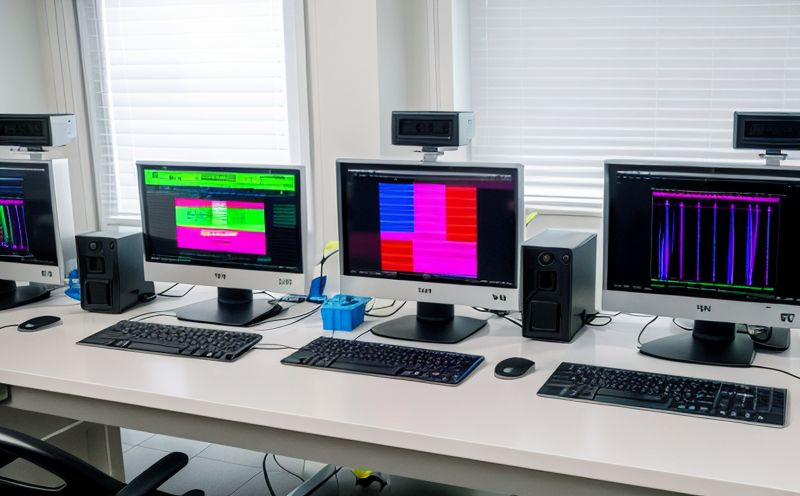EN 14476 Virucidal Activity Testing of Disinfectants
The European standard EN 14476 specifies a method for determining the virucidal activity of disinfectant products. This test is crucial in ensuring that disinfectants can effectively inactivate viruses, which is particularly important in healthcare settings and other critical environments. The protocol involves exposing virus-bearing suspensions to the disinfectant under controlled conditions, followed by a recovery step to assess viral infectivity.
The testing process aims at simulating real-world conditions as closely as possible. Specimens are typically inoculated with specific viruses (commonly those of the influenza family) and then exposed to various concentrations of the disinfectant. The duration of exposure is crucial, as it directly affects the outcome. After exposure, samples undergo a recovery step where the virus is allowed to replicate if it has not been inactivated by the disinfectant.
The effectiveness of the disinfectant is determined by comparing the viral titers before and after treatment. A significant reduction in titer indicates effective virucidal activity. This test helps ensure that the product can meet regulatory requirements for use in environments where virus inactivation is critical, such as hospitals or laboratories.
Understanding the nuances of this testing method requires knowledge of both the standard itself and its practical applications. For instance, the choice of viruses used in the test can vary based on the intended application of the disinfectant. Additionally, the temperature and humidity conditions during exposure play a vital role as they can influence the outcome.
The importance of this testing cannot be overstated, especially given the ongoing global focus on infectious diseases. Ensuring that disinfectants are capable of effectively inactivating viruses is not only a legal requirement but also a public health necessity. This test helps guarantee the safety and efficacy of products used in environments where viral contamination could pose significant risks.
It's worth noting that while EN 14476 focuses on virucidal activity, it does not provide specific guidance for bacterial or fungal testing. For those needs, other standards such as ISO 21789 might be more appropriate. The robustness of the test ensures that disinfectants can effectively contribute to reducing viral transmission in critical environments.
- EN 14476 specifies the use of specific viruses (e.g., influenza) for testing virucidal activity.
- The method involves exposing virus-bearing suspensions to disinfectant under controlled conditions.
- A recovery step assesses viral infectivity post-exposure, indicating effective inactivation if titer significantly reduces.
Why It Matters
The significance of virucidal activity testing cannot be overstated. In environments where hygiene is paramount—such as hospitals, laboratories, and other medical facilities—the effectiveness of disinfectants in inactivating viruses is critical for preventing the spread of infectious diseases.
Viruses are often responsible for severe outbreaks, and ensuring that disinfectants can effectively neutralize them is a key step towards maintaining public health. This testing method helps manufacturers demonstrate compliance with regulatory standards, thereby gaining market acceptance and trust from consumers and stakeholders.
Moreover, the results of this test influence decisions made by healthcare providers regarding which products to stock or recommend for use in their facilities. Compliance with EN 14476 ensures that healthcare professionals can rely on these disinfectants to protect patients and staff effectively.
The global nature of healthcare means that any product used must meet international standards, including those set out by EN 14476. This ensures consistency in quality across different regions, enhancing the reliability of products for use worldwide.
Benefits
Compliance with EN 14476 offers numerous benefits to manufacturers and users alike:
- Enhanced Safety: Ensures that disinfectants are effective in reducing the risk of viral transmission.
- Regulatory Compliance: Helps companies meet international regulatory requirements, facilitating market entry into various countries.
- Increased Trust: Builds confidence among healthcare providers and consumers by demonstrating product efficacy and safety.
- Better Informed Decisions: Provides healthcare facilities with reliable data to make informed purchasing decisions.
The testing process not only ensures that the disinfectant meets regulatory standards but also helps in identifying potential improvements. This can lead to better formulations, enhanced efficacy, and more robust products.
In summary, EN 14476 is a vital tool for manufacturers aiming to produce high-quality disinfectants. It provides a clear pathway to ensure that the product is effective against viruses, thereby contributing significantly to public health.
International Acceptance and Recognition
EN 14476 enjoys widespread international acceptance due to its stringent testing protocols and focus on virucidal activity. Countries around the world recognize this standard as a benchmark for ensuring that disinfectants are effective in reducing viral transmission.
- United States: The U.S. Environmental Protection Agency (EPA) recognizes EN 14476, allowing products tested according to this standard to be sold and used across the country.
- European Union: All EU member states accept products compliant with EN 14476, ensuring a consistent approach to hygiene standards.
- Australia and New Zealand: The Jointaustralian Standard (AS/NZS) closely aligns with EN 14476, allowing for seamless trade within the region.
The global acceptance of this standard underscores its importance in maintaining consistent hygiene practices across different regions. By adhering to EN 14476, manufacturers can ensure that their products are recognized and accepted worldwide, enhancing marketability and consumer trust.





